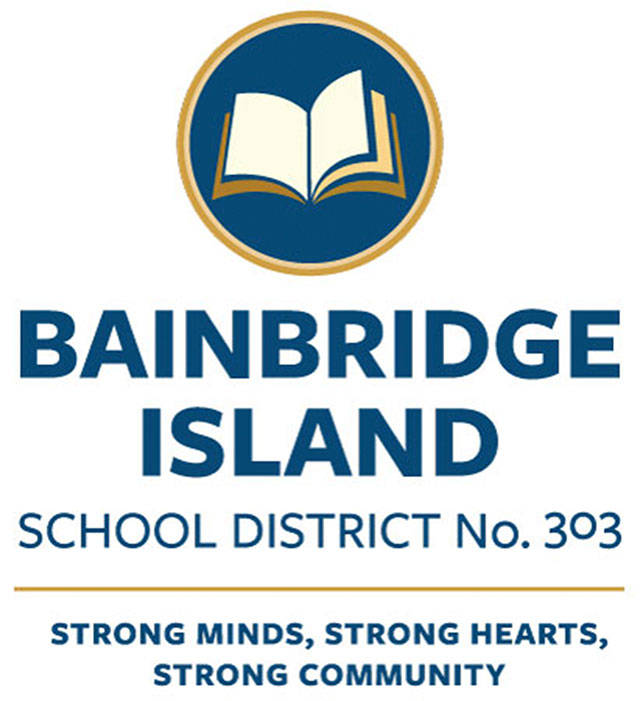As the Bainbridge Island School District inches closer to its tentative start date of Jan. 25 to begin in-person learning, Kitsap Health Officer Dr. Gib Morrow fielded a plethora of questions from the school board last week, ranging from COVID-19 vaccines to a new strain that made its way to the U.S.
The school board will meet Jan. 14 after press time to decide about students returning to school.
“There’s a big, complex process between them (vaccines) arriving in the communities, getting them into people’s arms, and we’re really trying to activate the local medical community to get enrolled and to get these vaccines distributed,” Morrow said. “As of a couple of days ago, we had got forty percent of the vaccines that had arrived in the community in people’s arms,” which was better than most other counties.
Morrow said the first round of the Phase A1 cohort should be vaccinated by Jan. 18, meaning teachers would be among the next in line in the B category. There are four tiers in Phase B, with the first one being all people 70 and older, which Morrow said should be receiving vaccines later this month.
“If you have any teachers that are seventy and older, we’ll get them to the front of the line,” he said.
The next tier is Phase B2 for ages 50 and older living in multi-generational households, which is scheduled to receive vaccines starting early February. Next (B2) is for “high-risk critical workers” 50 years or older, which includes educators and staff.
“As early as the second week of February, teachers can start getting vaccines,” Morrow said. “The good news is that teachers should all be in that (B) group which is going to be in the next” (one or two months).
Morrow touched on why the phased approach of bringing students back to school for in-person learning in a hybrid model is doable.
“Bringing in the little kids first makes a whole lot of sense,” he said. “There’s a lot of good data that shows that (ages) ten and under really don’t appear to be the drivers of community spread. I think that they’re more easily ‘cohort-able’ so you can keep them in groups. I think that they’re your best sort of early litmus test to kind of iron out all your processes.”
Board member Christina Hulet asked about the new looser state threshold of 350 new cases per 100,000 residents as a baseline for students to be phased back into school in a county, compared to the previous 75 per 100,000.
“They (state) probably looked at experiences across different states and different regions and factored in some of that,” Morrow said. “Part of it was just acknowledgment of just the absolute importance of getting kids into school and how potentially destructive it can be if we don’t do that. I think Bainbridge is going to be a good example in a model, I hope, for other school districts. Case rates went up a lot this last week on the island, but by and large, it’s a high performing community in terms of keeping the numbers down.”
Contrasting to the safety of the students, board member Mike Spence asked about the safety of teachers when grades K-5 tentatively return Jan. 25. Morrow echoed the importance of teachers taking all the possible precautions in order to reduce the risk of transmission.
“At least anecdotally, what we’ve seen here in schools that have been open are that they seem to be getting it from household transmission…as opposed to picking it up in the classroom from kids,” he said. “The risk to adults in a school setting…it’s going to be from, you know, letting their guard down in the break room or the lunchroom or carpooling inadvertently. We can’t say there’s no risk; there is risk. You can’t eliminate it completely.”
Board member Sanjay Pal asked about other school outbreaks and how they could learn from them.
“Certainly nationwide, there have been significant school outbreaks,” Morrow said. “In Washington, we’ve had great success. If you look at how Washington plays out nationwide in terms of case rates and disease burden, strain on the hospitals, were in the top five. So I mean that’s top ten percent nationwide despite having had the first cases.”
Morrow referred to pictures of Georgia schools where students didn’t appear to be social-distancing and weren’t wearing masks. “I think if you can do it right, you’ll do well,” he said.
Another monumental factor is the new COVID variant first found in the United Kingdom and has spread to a few states. Hulet asked about what the potential presence of that strain could do to the district’s reopening plan.
“I don’t know what this new variant coming out of the UK is going to really do locally, but it is a very, very, significant concern,” Morrow said. “We don’t know that we have it here in Washington, but I think when we see it, hear it, it may change things significantly. And I think we’ll see case rates going up.
“It does not appear to make people sick,” he continued. “If you get infected with that variant, your likelihood of having a severe illness or dying from it is unchanged. What it will do is radically and exponentially expand the number of people that have it.”
Superintendent Peter Bang-Knudsen shared a graph by the Institute for Disease Modeling, indicating that when schools implement COVID-19 health and safety measures (mask-wearing, social distancing, screening, etc.), the community spread of the disease remains “relatively similar in the hybrid learning model as a fully remote learning model.”



